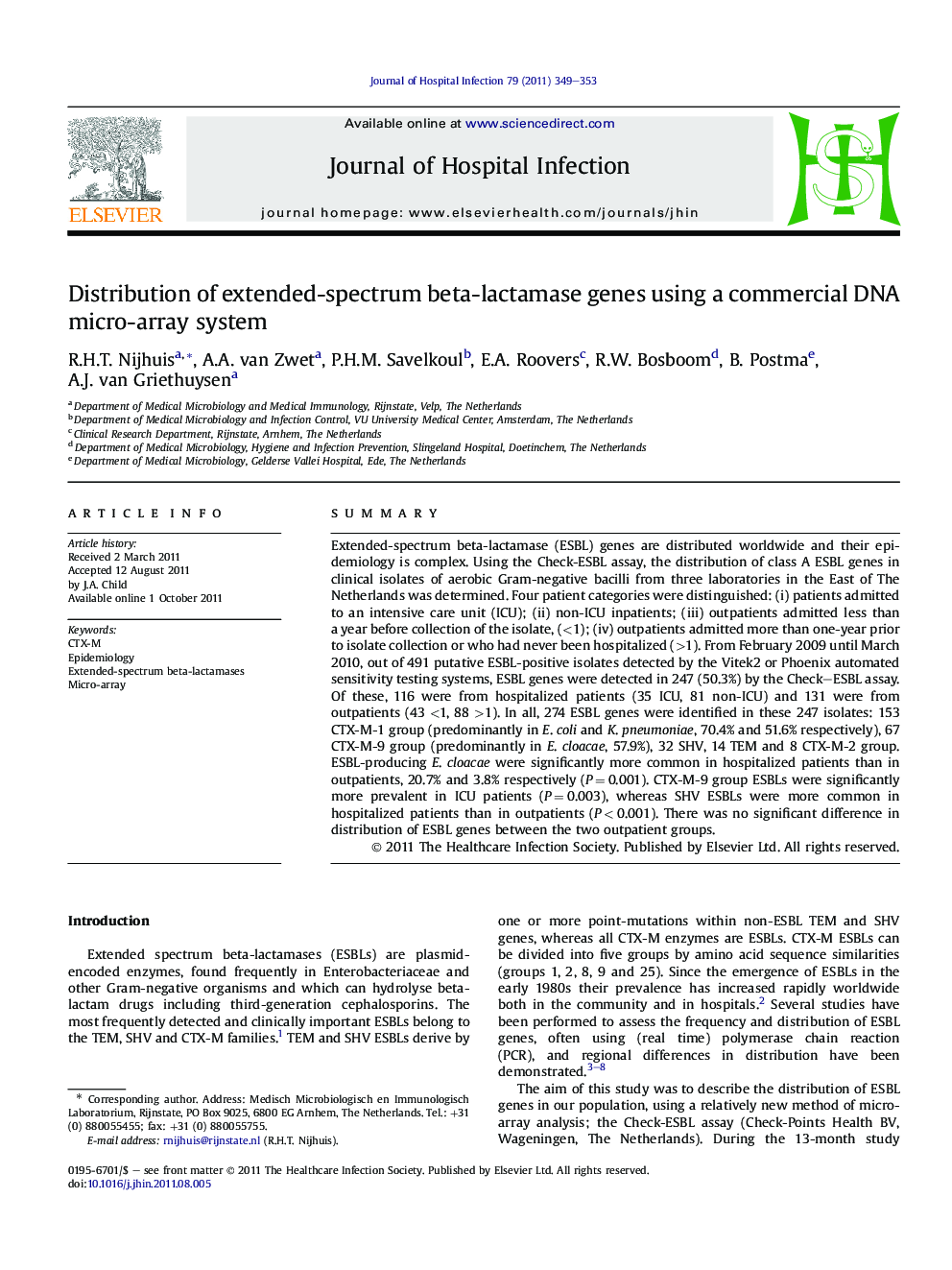| Article ID | Journal | Published Year | Pages | File Type |
|---|---|---|---|---|
| 3372122 | Journal of Hospital Infection | 2011 | 5 Pages |
SummaryExtended-spectrum beta-lactamase (ESBL) genes are distributed worldwide and their epidemiology is complex. Using the Check-ESBL assay, the distribution of class A ESBL genes in clinical isolates of aerobic Gram-negative bacilli from three laboratories in the East of The Netherlands was determined. Four patient categories were distinguished: (i) patients admitted to an intensive care unit (ICU); (ii) non-ICU inpatients; (iii) outpatients admitted less than a year before collection of the isolate, (<1); (iv) outpatients admitted more than one-year prior to isolate collection or who had never been hospitalized (>1). From February 2009 until March 2010, out of 491 putative ESBL-positive isolates detected by the Vitek2 or Phoenix automated sensitivity testing systems, ESBL genes were detected in 247 (50.3%) by the Check–ESBL assay. Of these, 116 were from hospitalized patients (35 ICU, 81 non-ICU) and 131 were from outpatients (43 <1, 88 >1). In all, 274 ESBL genes were identified in these 247 isolates: 153 CTX-M-1 group (predominantly in E. coli and K. pneumoniae, 70.4% and 51.6% respectively), 67 CTX-M-9 group (predominantly in E. cloacae, 57.9%), 32 SHV, 14 TEM and 8 CTX-M-2 group. ESBL-producing E. cloacae were significantly more common in hospitalized patients than in outpatients, 20.7% and 3.8% respectively (P = 0.001). CTX-M-9 group ESBLs were significantly more prevalent in ICU patients (P = 0.003), whereas SHV ESBLs were more common in hospitalized patients than in outpatients (P < 0.001). There was no significant difference in distribution of ESBL genes between the two outpatient groups.
